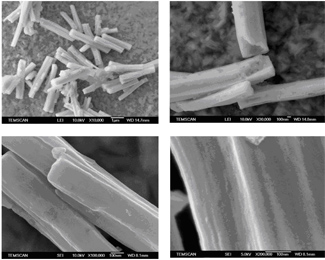Organisation of polyfluorinated platinum nanoparticles

Metal nanoparticles are of great interest because of their size at nanometer scale which provides them with new properties, different from those of bulk metal. In this work some materials formed by small platinum nanoparticles stabilized by a compound with a high fluorine content have been prepared and characterized. These nanocomposites display a long range organization forming rod and wire shaped superstructures. Such organization results from the combination of two factors: a) an organometallic route leading to size-controlled nanoparticles; b) the use of a polyfluorinated compound able to self-assemble as a stabilizing agent.
Metal nanoparticles are particles between 1 and 50 nm of diameter surrounded by a stabilizing agent to avoid their agglomeration. They have several applications in areas such as optics, magnetism and catalysis. Nanoparticles can take specific properties from the stabilizer. Thus, metal nanoparticles stabilized by highly fluorinated compounds are soluble in fluorinated solvents and they can be used in organic-fluorous biphasic catalysis.
The physical and chemical properties of these nanostructures are dependent on their size and shape, so it is necessary to find synthetic methods which allow good control of their morphology. The organometallic approach, developed by Bruno Chaudret and collaborators, is a good choice for that purpose and it consists in the decomposition of organometallic precursors by a reactive gas (hydrogen or carbon monoxide) under mild conditions.
Figure 3. Scanning Electron Microscopy images from wire shaped superstructures.
In the work described in this article, nanoparticles of ca 2 nm were obtained by combining the use of a polyfluorinated compound as stabilizer and the organometallic approach (following two different paths) as synthetic method. The nanomaterials thus obtained display rod or wire shaped superstructures (figures 2 and 3) and they were characterized by transmission electron microscopy, scanning electron microscopy and wide and small angle x-ray scattering, which confirmed the nanocomposites organization.
We can explain the observed superstructures by the coordination of the reactive gas on the nanoparticles surface, as well as the self-organization of the stabilizing agent in the reaction medium.
References
Formation of nanocomposites of platinum nanoparticles embedded into heavily fluorinated aniline and displaying long range organization. Mar Tristany, Marcial Moreno-Mañas, Roser Pleixats, Bruno Chaudret, Karine Philippot, Philippe Dieudonné, Pierre Lecante. J. Mater. Chem. 2008, 18, 660-666.

